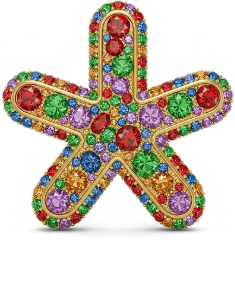Mercurial > code > home > repos > rdfdb
view rdfdb/readme @ 53:a21b87140758
more stubs
Ignore-this: ff80b18a86305d43128277f5db0248b5
| author | Drew Perttula <drewp@bigasterisk.com> |
|---|---|
| date | Thu, 30 May 2019 08:15:10 +0000 |
| parents | c9d1764d64ad |
| children |
line wrap: on
line source
other tools POST themselves to here as subscribers to the graph. They are providing a URL we can PUT to with graph updates. we immediately PUT them back all the contents of the graph as a bunch of adds. later we PUT them back with patches (del/add lists) when there are changes. If we fail to reach a registered caller, we forget about it for future calls. We could PUT empty diffs as a heartbeat to notice disappearing callers faster. A caller can submit a patch which we'll persist and broadcast to every other client. Global data undo should probably happen within this service. Some operations should not support undo, such as updating the default position of a window. How will we separate those? A blacklist of subj+pred pairs that don't save undo? Or just save the updates like everything else, but when you press undo, there's a way to tell which updates *should* be part of your app's undo system? Maybe some subgraphs are for transient data (e.g. current timecode, mouse position in curvecalc) that only some listeners want to hear about. Deletes are graph-specific, so callers may be surprised to delete a stmt from one graph but then find that statement is still true. Alternate plan: would it help to insist that every patch is within only one subgraph? I think it's ok for them to span multiple ones. Inserts can be made on any subgraphs, and each subgraph is saved in its own file. The file might not be in a format that can express graphs, so I'm just going to not store the subgraph URI in any file. I don't support wildcard deletes, and there are race conditions where a s-p could end up with unexpected multiple objects. Every client needs to be ready for this. We watch the files and push their own changes back to the clients. Persist our client list, to survive restarts. In another rdf file? A random json one? memcache? Also hold the recent changes. We're not logging everything forever, though, since the output files and a VCS shall be used for that Bnodes: this rdfdb graph might be able to track bnodes correctly, and they make for more compact n3 files. I'm not sure if it's going to be hard to keep the client bnodes in sync though. File rereads would be hard, if ever a bnode was used across graphs, so that probably should not be allowed. Our API: GET / ui GET /graph the whole graph, or a query from it (needed? just for ui browsing?) PUT /patches clients submit changes GET /patches (recent) patches from clients POST /graphClients clientUpdate={uri} to subscribe GET /graphClients current clients format: json {"adds" : [[quads]...], "deletes": [[quads]], "senderUpdateUri" : tooluri, "created":tttt // maybe to help resolve some conflicts } maybe use some http://json-ld.org/ in there. proposed rule feature: rdfdb should be able to watch a pair of (sourceFile, rulesFile) and rerun the rules when either one changes. Should the sourceFile be able to specify its own rules file? That would be easier configuration. How do edits work? Not allowed? Patch the source only? Also see the source graph loaded into a different ctx, and you can edit that one and see the results in the output context? Our web ui: sections registered clients recent patches, each one says what client it came from. You can reverse them here. We should be able to take patches that are close in time and keep updating the same data (e.g. a stream of changes as the user drags a slider) and collapse them into a single edit for clarity. Ways to display patches, using labels and creator/subj icons where possible: <creator> set <subj>'s <p> to <o> <creator> changed <subj>'s <pred> from <o1> to <o2> <creator> added <o> to <s> <p> raw messages for debugging this client ctx urls take you to-> files, who's dirty, have we seen external changes, notice big files that are taking a long time to save graph contents. plain rdf browser like an outliner or something. clicking any resource from the other displays takes you to this, focused on that resource
